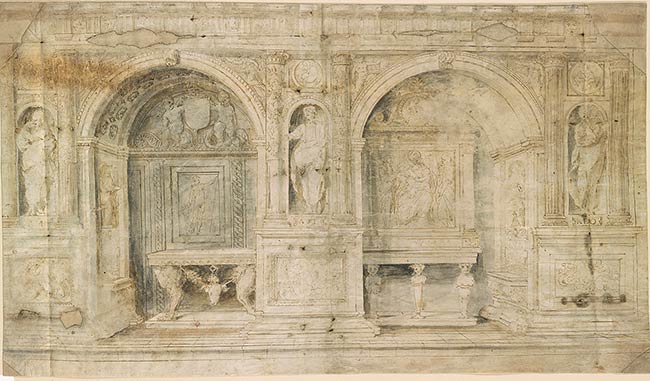

The architecture, which includes a cardinal’s hat without a coat-of-arms and nonsensical inscriptions in several of the cartouches, was probably made without a specific commission in mind but rather as a precious object – it is on vellum – to be shown to potential patrons. Hans Hubert noted that some of the architectural details such as the herm pilasters supporting the altar are similar to forms employed by Bartolommeo Ammanati around 1560 (unpublished opinion recorded in curatorial file, 2002). Hubert further noted that the draftsman is not likely to have been an architect since he combined triglyphs with the Ionic order, whereas in classical architecture they may only be combined with the Doric order.1
Footnotes:
- Georg Schelbert seconded this analysis (unpublished opinion recorded in curatorial file, 2002).
Inscribed by the artist, at left, beneath figure in niche, in pen and brown ink, "A M;" at center, beneath figure in niche, "AVE;" at right, beneath figure in niche, "REO."
Murray, Charles Fairfax, 1849-1919, former owner.
Morgan, J. Pierpont (John Pierpont), 1837-1913, former owner.
Morgan, J. P. (John Pierpont), 1867-1943, former owner.
Selected references: Fairfax Murray 1905-12, 4: no. 51 (as School of Parma).
Collection J. Pierpont Morgan : drawings by the old masters formed by C. Fairfax Murray. London : Privately printed, 1905-1912, IV, 51 (as School of Parma).
